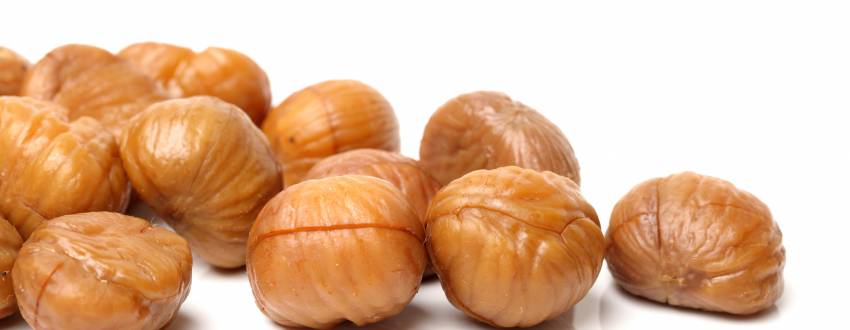Sponsored by Gefen Chestnuts
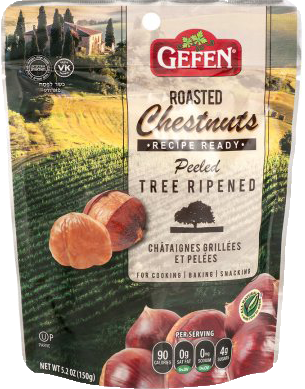
You’ve heard of them roasting on an open fire. You’ve seen them on street carts in New York in the winter. But have you ever really wondered what to do with chestnuts?
The fragrant nut (yes, it’s actually a nut) is a cold-weather favorite of American culture, to be sure. But it also serves a surprising number of purposes in cooking—and eating. Whether going sweet or savory, cooking or baking, it’s hard to go wrong with the chestnut.
Chestnuts usually come raw, still in their inner skin after being freed from their spiky green outer skin (seriously, these babies grow looking like porcupines!). However, most experts recommend against eating them in their raw state because of their extremely high tannic acid content. Suffice to say, it’s better to hold out and just eat them roasted.
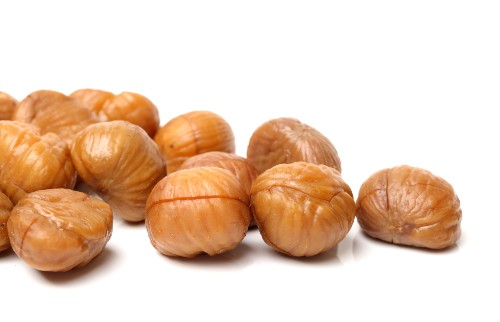
Perhaps the most convenient way to enjoy chestnuts is to buy them already roasted. Gefen makes delicious roasted chestnuts that you can buy in most supermarkets.
But what do I do with them?
One of the best ways to enjoy chestnuts is simply to eat them as is. Warm them slightly and dig in. They’re a great snack! But there are also hundreds (or more!) of ways to use chestnuts that are equally delectable.
Chestnuts are soft and starchy in texture, with a sweet, earthy flavor that works great in both sweet and savory foods. Here are some ideas to get you started!
Savory Chestnuts
As I said, chestnuts are pretty great as is, which means that they’re super delicious just thrown into your favorite recipes. Try chopping them up and using them in a salad, quinoa dish, or pasta.
If you want to go a step further chestnuts are great with roasted fall and winter vegetables. If you’re a fan of acorn squash, you can fill the cavity with some roughly chopped chestnuts, diced apple, and a drizzle of maple syrup before baking it.
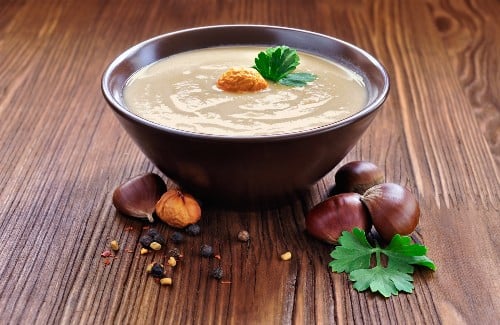
Stay warm as the temperature drops with a luscious chestnut soup. Add your chestnuts and some vegetable broth to lightly sautéed onions, and bring to a boil. Fresh thyme complements chestnuts beautifully, so throw some in for added flavor. Reduce heat and simmer for 20 minutes to a half hour and then purée until smooth. For a creamier texture, add half and half or soy milk.
Go Italian with chestnut ravioli, by adding chopped chestnuts to sautéed onions and garlic. Seal filling into wonton wrappers and boil in lightly salted water for ravioli perfection!
Still not convinced? Then you haven’t tried chestnut stuffing. You don’t have to wait until Thanksgiving to try this Smoked Turkey Chestnut Challah Stuffing.
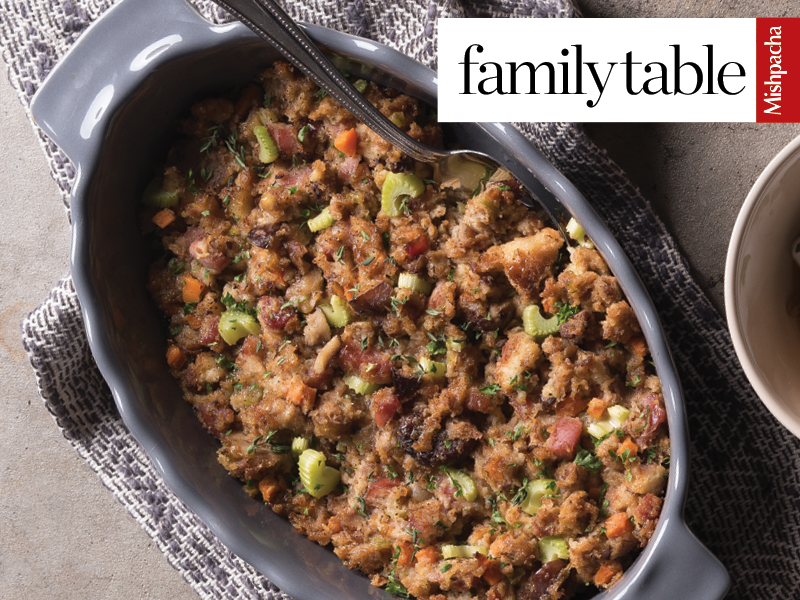
Sweet Chestnuts
Why only have chestnuts for lunch and dinner when you can also have them for dessert? Make your own chestnut chocolate spread. Simply add a whole bag of chestnuts to a saucepan with 1/3 cup of whole milk. Bring to a gentle boil and cook over a medium heat for about 10 minutes. Lower heat and stir in 1/3 cup of brown sugar, one teaspoon of vanilla, and a pinch of salt. Then add 4 ounces of unsweetened dark chocolate and stir until melted and combined. Once cooled, use a blender to get it extra smooth.
Chestnuts can also make a great substitute for white flour in your favorite cake recipe. You can make your own chestnut flour by dehydrating chestnuts yourself. If you don’t have a dehydrator (I don’t blame you,) you can leave them in the oven on a cookie sheet on the lowest setting until they get so well done they’re hard. This could take 12-24 hours. Once cooled, pulse them in a food processor until you have a fine, flour-like texture. This is a great ingredient for those gluten-free dessert lovers out there.
Possibly the best way to eat sweet chestnuts is to candy them. Known in France as Marrons Glacé, candied chestnuts do take a bit of effort, but starting with already roasted chestnuts certainly makes it easier. You’ll need equal parts chestnuts and sugar and one and a quarter times the amount of water.
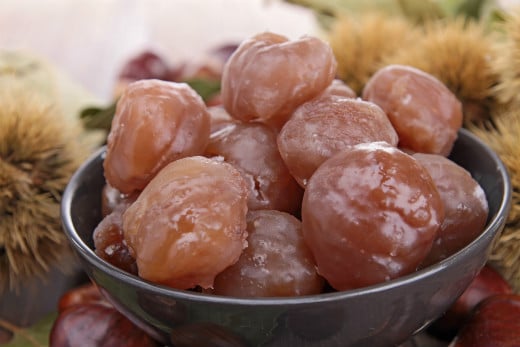
You start by boiling your chestnuts in water (separate from the water listed above) for about 10 minutes until they’ve softened. Then you can drain them and set aside. Add your water and sugar to a saucepan, adding a splash of vanilla and stirring constantly until it comes to a boil. Cook the mixture for a few more minutes until it becomes syrupy. Then add in the chestnuts and stir until the whole mixture returns to a boil.
At this point you pour your syrup-ed chestnuts into a covered container to absorb the syrup overnight or for 12 or more hours. This process needs to be repeated three or four times, bringing them back to a boil for a minute or two and then letting them sit for as long as 24 hours before doing it all over again. After the final stage, bake for an hour at 250F to make sure they’ve firmed up. It takes a couple of days, but the results are so good you won’t believe you did it yourself!
So there you go! Skip the roasting and get straight to the enjoying with these ideas. Have other great ideas for how to use chestnuts? Let us know in the comments!


